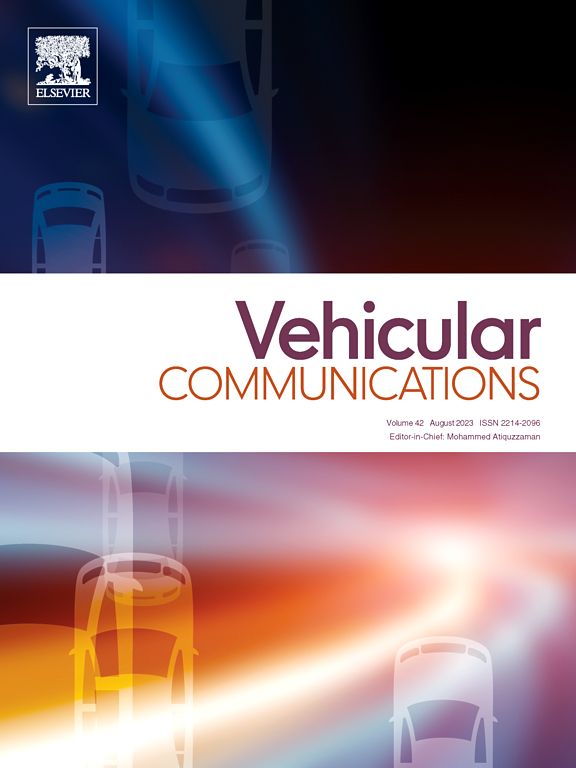Exploring the use of mobile IRS in a vehicular context
IF 6.5
2区 计算机科学
Q1 TELECOMMUNICATIONS
引用次数: 0
Abstract
Intelligent Reflecting Surfaces or IRSs are energy-efficient technologies used as “passive” relays to increase coverage. Often fixed, they enable connectivity to users in positions that are difficult for the base station to access, or that are blind. Most studies propose fixed IRS positioning, with the disadvantage of covering only a fixed zone. Therefore, in the vehicular environment, it would be interesting to see the feasibility of placing IRSs following traffic. We, therefore, propose to study the mobile placement of IRSs in a vehicular context first by using an optimizer and then by relying on heuristics. In the first part, we compare fixed and mobile IRS positioning. Then, for the heuristic part, we present different IRS election strategies, which we have compared. Performances are compared between fixed and mobile placement in the first part, and between one and two hops in the second part, all while analyzing the impact of different parameters on these results. We also evaluated the impact of a trajectory predictor and the dataset on these results.
探索在车辆环境中使用移动IRS
智能反射面(IRSs)是一种节能技术,用作“被动”中继以增加覆盖范围。它们通常是固定的,可以连接到基站难以访问的位置或失明的用户。大多数研究提出固定IRS定位,缺点是只覆盖固定区域。因此,在车辆环境中,将irs放置在交通之后的可行性将是一件有趣的事情。因此,我们建议首先通过使用优化器,然后依靠启发式来研究irs在车辆环境中的移动放置。在第一部分中,我们比较了固定和移动IRS定位。然后,在启发式部分,我们提出了不同的IRS选举策略,并对其进行了比较。第一部分比较了固定和移动放置的性能,第二部分比较了一跳和两跳之间的性能,同时分析了不同参数对这些结果的影响。我们还评估了轨迹预测器和数据集对这些结果的影响。
本文章由计算机程序翻译,如有差异,请以英文原文为准。
求助全文
约1分钟内获得全文
求助全文
来源期刊

Vehicular Communications
Engineering-Electrical and Electronic Engineering
CiteScore
12.70
自引率
10.40%
发文量
88
审稿时长
62 days
期刊介绍:
Vehicular communications is a growing area of communications between vehicles and including roadside communication infrastructure. Advances in wireless communications are making possible sharing of information through real time communications between vehicles and infrastructure. This has led to applications to increase safety of vehicles and communication between passengers and the Internet. Standardization efforts on vehicular communication are also underway to make vehicular transportation safer, greener and easier.
The aim of the journal is to publish high quality peer–reviewed papers in the area of vehicular communications. The scope encompasses all types of communications involving vehicles, including vehicle–to–vehicle and vehicle–to–infrastructure. The scope includes (but not limited to) the following topics related to vehicular communications:
Vehicle to vehicle and vehicle to infrastructure communications
Channel modelling, modulating and coding
Congestion Control and scalability issues
Protocol design, testing and verification
Routing in vehicular networks
Security issues and countermeasures
Deployment and field testing
Reducing energy consumption and enhancing safety of vehicles
Wireless in–car networks
Data collection and dissemination methods
Mobility and handover issues
Safety and driver assistance applications
UAV
Underwater communications
Autonomous cooperative driving
Social networks
Internet of vehicles
Standardization of protocols.
 求助内容:
求助内容: 应助结果提醒方式:
应助结果提醒方式:


